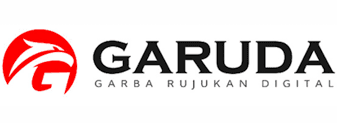Optimalisasi Antrian Dengan Algoritma Genetika di PT. Bank Rakyat Indonesia (Persero) Tbk. Unit Kelapa Lima
Abstrak
Salah satu masalah yang paling mengganggu ketika mengantri di bank adalah antian yang panjang dengan jumlah teller yang tidak cukup. Hal ini tentu saja akan membuat nasabah merasa tidak nyaman. Untuk mengatasi masalah ini, bank bisa menambah jumlah teller tetapi hal itu bisa saja membawa beberapa kerugian bagi pihak bank jika kemudian ditemukan bahwa penambahan teller ternyata berlebihan, walaupun hal ini akan memenuhi kebutuhan nasabah. Maka untuk menemukan solusi optimal dari masalah antrian tersebut digunakan algoritma genetika. Masalah pokok yang menjadi fokus dalam penelitian ini adalah bagaimana cara mengaplikasikan algoritma genetika untuk masalah sistem antrian dan bagaimana menentukan sistem antrian yang optimal dengan algoritma genetika bantuan program Turbo Pascal 7.0 yang dapat diterapkan pada PT. Bank Rakyat Indonesia (Persero) Tbk. Cabang Kupang Unit Kelapa Lima.
Tujuan algoritma genetika adalah mencari individu dengan nilai fitness paling tinggi, maka fungsi fitness untuk masalah sistem antrian adalah inversi jumlah antara tingkat nganggur teller dan waktu tunggu nasabah dalam antrian. Dengan menggunakan algortima genetika diketahui bahwa jumlah teller yang optimal pada periode sibuk adalah 4 teller.
##plugins.generic.usageStats.downloads##
Referensi
Siswanto. (2007). Operation Reseach jilid II. Jakarta : Erlangga.
Siswanto, H.B. (2007). Pengantar Manajemen. Jakarta : Bumi Aksara.
Suyanto. (2005). Algoritma Genetika dalam Matlab.Yogyakarta: Andi Offset .
Widyastuty, N., & Hamzah, A. (2007). Penggunaan Algoritma Genetika Dalam Peningkatan Kinerja Fuzzy Clustering Untuk Pengenalan Pola. Journal of mathematics and natural sciences BIMIPA, vol.17, No.2. Yogyakarta : FMIPA UGM.
##submission.copyrightStatement##
##submission.license.cc.by-nc-sa4.footer##- Hak publikasi atas semua materi naskah jurnal yang diterbitkan/dipublikasikan dalam situs E-Journal Fraktal ini dipegang oleh dewan redaksi dengan sepengetahuan penulis (hak moral tetap milik penulis naskah).
- Ketentuan legal formal untuk akses artikel digital jurnal elektronik ini tunduk pada ketentuan lisensi Creative Commons Attribution-ShareAlike (CC BY-SA), yang berarti Jurnal Fraktal berhak menyimpan, mengalih media/format-kan, mengelola dalam bentuk pangkalan data (database), merawat, dan mempublikasikan artikel tanpa meminta izin dari Penulis selama tetap mencantumkan nama Penulis sebagai pemilik Hak Cipta.
- Naskah yang diterbitkan/dipublikasikan secara cetak dan elektronik bersifat open access untuk tujuan pendidikan, penelitian, dan perpustakaan. Selain tujuan tersebut, dewan redaksi tidak bertanggung jawab atas pelanggaran terhadap hukum hak cipta.

 Imelda Hendriani Eku Rimo(1*)
Imelda Hendriani Eku Rimo(1*)










